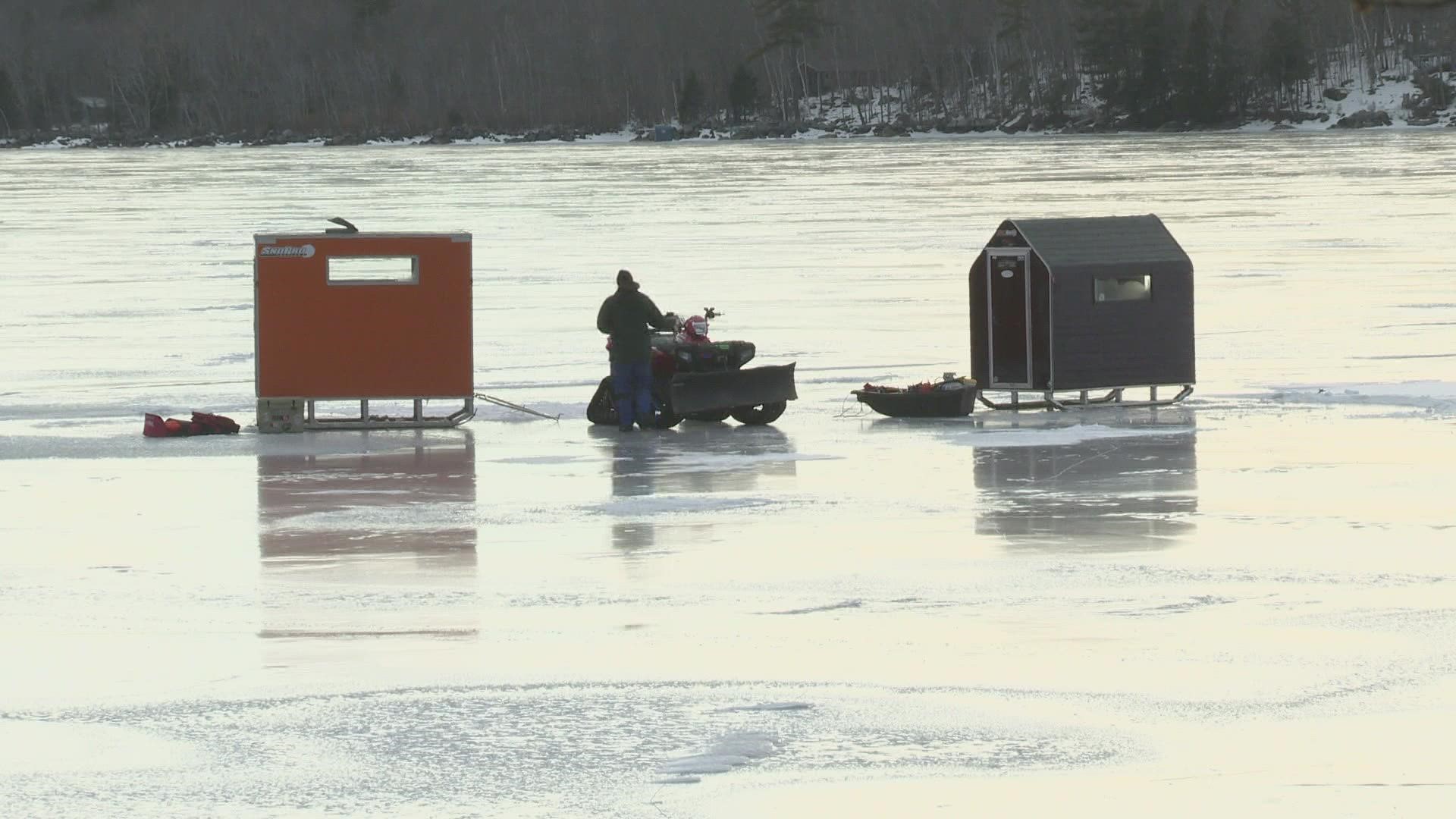RAYMOND, Maine — It was a busy weekend for first responders in Cumberland County, who helped save three people in two separate incidents where utility terrain vehicles fell through the ice on Sebago Lake.
"Don't just assume because you're looking out and it looks safe that it is," Maine Game Warden Neil Wykes said. Wykes is one the of first responders who came to the aid of a 71-year-old Sunday after his UTV, also known as a side by side, fell through the ice.
"Where it [UTV] went through, there's a lot of rocks. And it's fairly shallow, but the rocks make the ice unstable because of the heat the sun generates off the rocks. He was able to get out of the water, and he was sitting on the rocks. And that's where the airboat picked him up," Wykes said.
Experts in ice rescue are now urging caution following the incidents. Gerry Dworkin is a technical consultant for aquatic safety and water rescue with Lifesaving Resources. He teaches first responders across the nation and Maine how to appropriately respond to incidents on the ice.
"We go under the impression that no ice should ever be considered as safe ice, especially when you have fluctuating temperatures," Dworkin said.
Dworkin added that while ice might be suitable in one section of a lake or pond, it could be compromised in another area. He, and the Maine Department of Inland Fisheries and Wildlife, recommend at least 4 inches of new, clear, hard ice before venturing out on foot, skis, or skates.
"You may have 12 to 15 inches of ice, but if it begins to thaw and refreeze and thaw and refreeze, add a little rain to all that, all of that's going to compromise the integrity of the ice" Dworkin said.
To be prepared for the worst-case scenario, Dworkin recommended bringing a whistle to alert others in the event of an emergency. He also said to pack ice picks, which can be used to help pull yourself out of frigid water, and to consider wearing a float coat or lifejacket to provide buoyancy if you fall in.
Dworkin said it's never safe to drive on ice but understands it's something that happens on many lakes and ponds. He said if you have to drive on the ice, open your windows beforehand. If the vehicle goes through the ice, the only escape route will be through the windows as the doors won't open because of water pressure.
"Should somebody fall through the ice, it's critical that 911 be called, and if you're going to attempt a rescue, it should be an extension rescue, throwing something, or reaching something to the victim," Dworkin said.
Dworkin also added it's important to let others know where you'll be going in case an incident does occur.

